Argan oil, a global darling of beauty and culinary worlds, comes solely from Morocco’s sun-baked hills. Every drop is an opportunity to be reminded of the precious heritage carried by generations of Moroccan women.
I recently wandered through an Argan forest near Essaouira. It’s harvest season—from June to August, when the ripe fruit falls naturally to the ground. I spotted a few glossy green fruits still clinging to the trees, and then noticed others scattered below. I picked one up. Then another. I slipped them into my pocket. And then, I’ll admit, I got greedy. I took off my hat and started collecting every little dry nut I could find.
Argan trees (Argania spinosa) grow to 8–10 meters and live up to 200 years. They have twisted trunks and wide-spreading crowns. They are particularly adapted to the semi-desert southwestern Souss Valley. In 1998, the argan forest there was designated a UNESCO biosphere reserve, as a tribute to its unique ecological value and cultural importance.
The tree's deep root system helps prevent desertification by holding the soil together, making it an environmental cornerstone in the region. Outside of its native habitat, attempts have been made to cultivate the Argan tree in similar climates, but these attempts have not been successful, thus, the argan products on the global market are predominantly sourced from Morocco.
What most people don’t know is that Argan trees are thorny, and so is everything growing around them.
I was wearing flip-flops—not the smartest choice. My feet and hands caught more than a few scratches and pricks. So much for the nut that promises soft skin. I kept glancing around—this region is home to scorpions and snakes. Meanwhile, women do this every day. Probably in sandals. No gloves. Under a hard sun. I lasted twenty minutes.
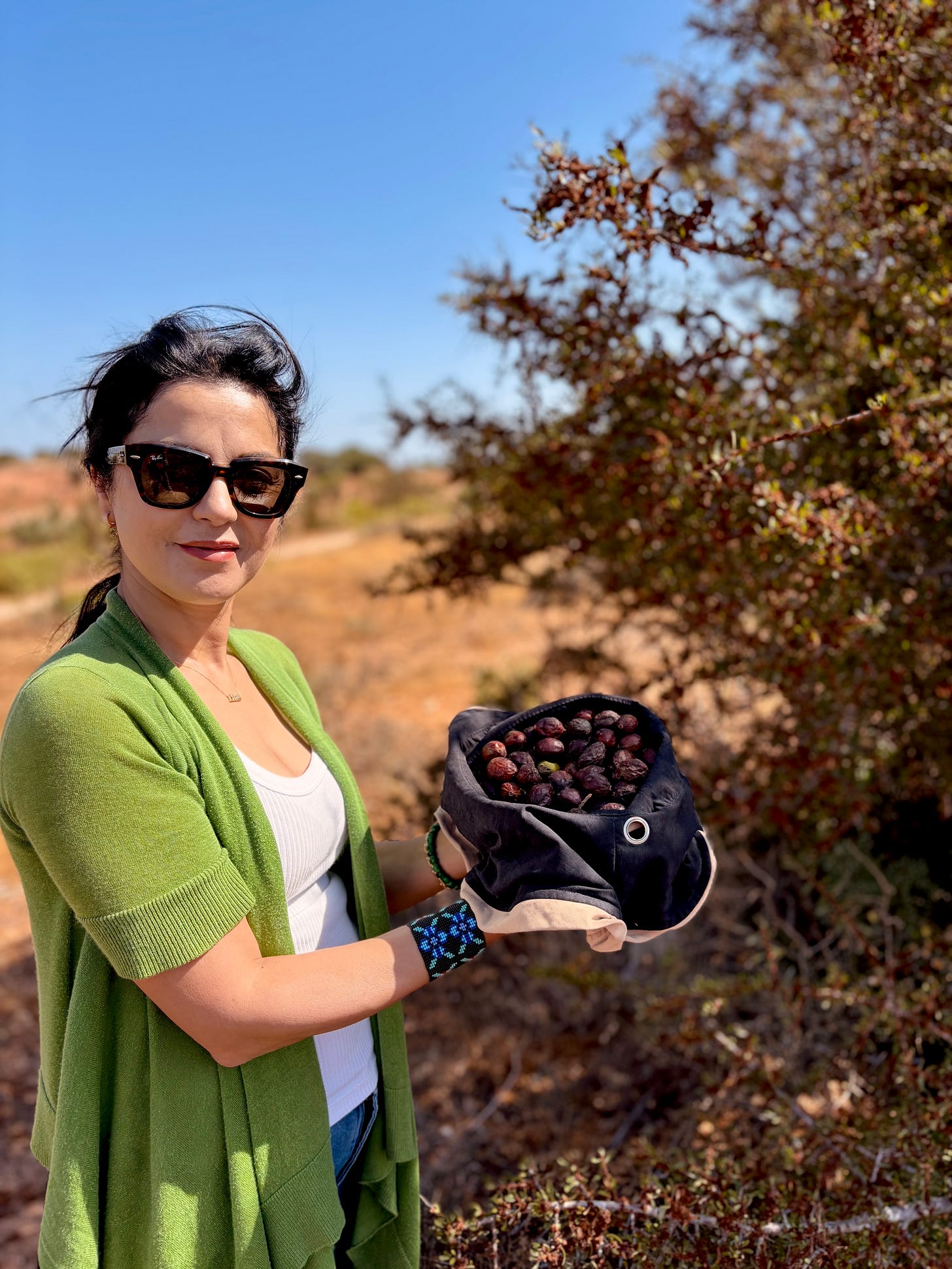
For generations, women in southern Morocco have gathered the fruit, cracked each nut by hand using stones, and pressed the golden oil with care. This living tradition passed between mothers and daughters has been nourishing communities and protecting one of the world’s rarest forests.
The Corporate Takeover of Argan
But today, our tradition is under threat. In The Great Argan Appropriation, Morocco World News (MWN) notes “The sustainability of Morocco's 'miracle oil' has long been threatened by climate change — but it also faces a more immediate danger: international exploitation in an era of globalization.”
Since 2005, the French multinational Olvea has taken control of nearly 70% of Morocco’s argan oil exports. Women’s cooperatives—the heart and soul of the industry—have been pushed to the margins, reduced to subcontracted, low-paid labor, while foreign companies dominate processing, branding, and profits. Access to raw fruit has become increasingly difficult, and traditional ecological practices like the agdal are often ignored.
Agdal, an Amazigh word meaning “protected or forbidden pasture,” refers to a communal system of seasonal rest where specific lands or forests are left untouched to allow for natural regeneration. In the case of argan, this means not allowing goat grazing. For centuries, it ensured the sustainability of argan groves.
To add insult to injury, even the word argane (as spelled in French) was trademarked in France. Ironic, coming from a country that also happens to be mine, where nearly every type of cheese is fiercely protected by trademarks.
Weak legal frameworks have allowed foreign dominance. MWN states: “The strategic and cultural significance of argan oil makes it vital to ensure that access to this natural treasure remains fair, inclusive, and beneficial to local communities.” Women rise daily, braving thorns and heat with baskets in hand, carrying a tradition that deserves ownership, not exploitation.
In 2023, Médias24 published a four-part investigation titled Argane: Hold-up sur un patrimoine national, highlighting the corporate takeover of Morocco’s argan oil industry, which has recently sparked outrage on social media.
I trust Moroccan authorities will take note. This is no longer just about argan oil. It’s about sovereignty, and about ensuring that ancestral knowledge, local labor, and natural resources truly benefit the communities that sustain them.
What Argan Means in the Kitchen
Beyond its cosmetic fame, argan oil has always had a sacred place in Moroccan cuisine. Toasted argan oil adds rich, nutty touch to dishes, drizzled over roasted peppers, stirred into a steaming tagine, or blended into amlou, a traditional spread made from toasted almonds, honey, and argan oil. Think of it as Morocco’s Nutella, but better.
At home, I often blend pure raw argan oil with extra virgin olive oil to make a weekly salad dressing. It’s neutral in flavor, rich in antioxidants and vitamin E. While the roasting process deepens the taste, it also lowers nutritional value. That’s why I like to use both, depending on what the dish calls for.
Let’s also clear up a myth: raw argan oil is not just for cosmetic use. It’s been used in Moroccan kitchens for centuries. What’s marketed globally as “for hair and skin” is often the very same oil we drizzle on food—just labeled differently and mixed with essential oils such as lavender or roses.
A Word on the Cosmetic Industry
Most commercial cosmetic products contain only tiny amounts of argan oil, if any. And once mixed with water, shampoo, or preservatives, much of its benefit is lost. Good quality argan oil is expensive. But it’s worth it. The only way to truly experience its richness, nutritionally or cosmetically, is to use it in its pure form.
What Needs to Change
If argan oil is to remain a symbol of Moroccan wisdom, women’s resilience, and ecological harmony, it must be protected, legally, economically, and culturally.
Because what’s at stake isn’t just a luxury anti-aging oil. It’s the right to tell our own story. To preserve the knowledge carried by generations of Moroccan women—women who continue to rise early, brave the thorns and heat, and work by hand to produce something the world can’t seem to get enough of.
Their labor is invisible in most marketing campaigns, but it’s present in every drop. And if the world really loves argan, it must start by honoring the women who make it possible.
Have you used argan oil for cooking? If so, how?




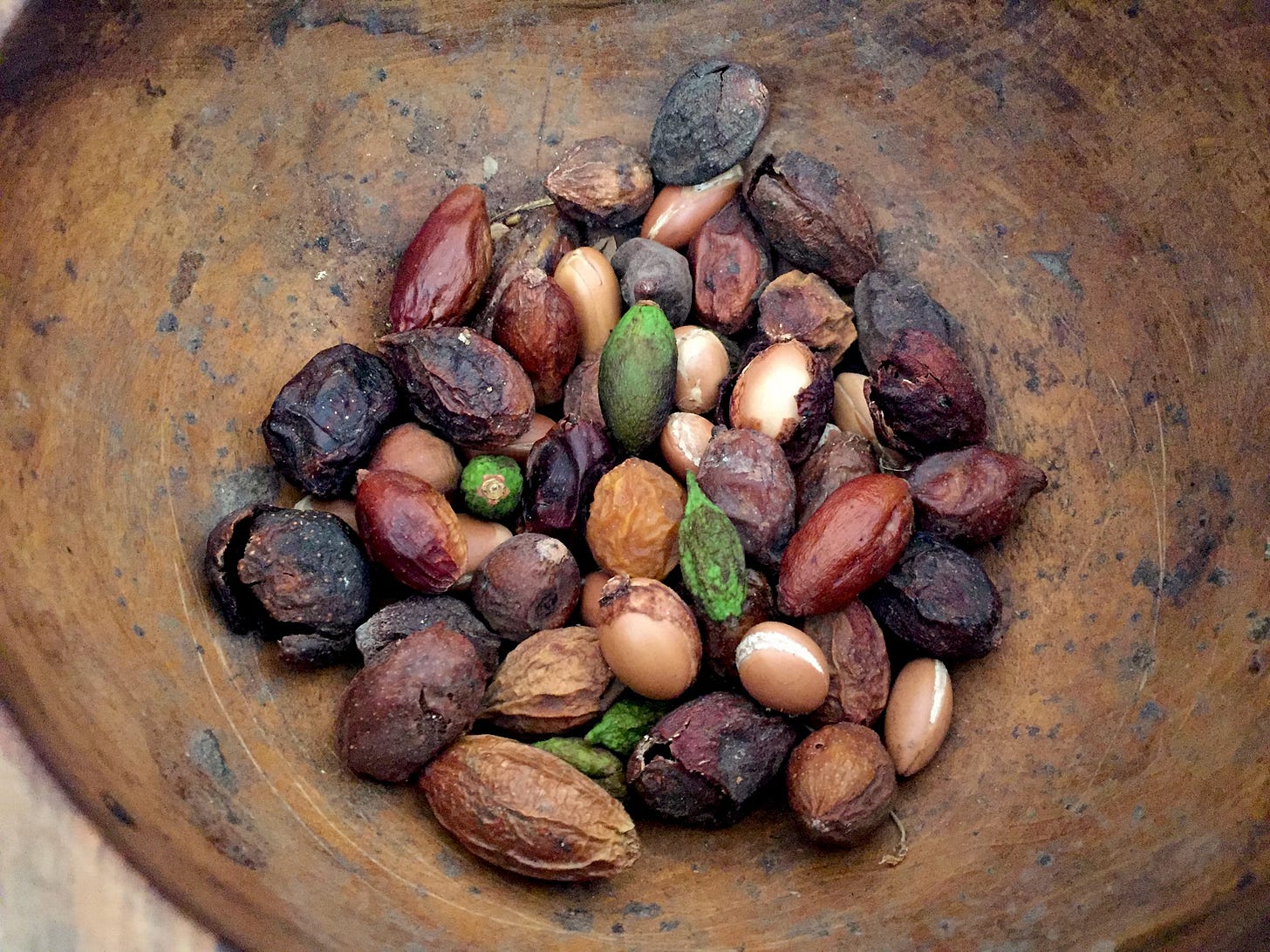
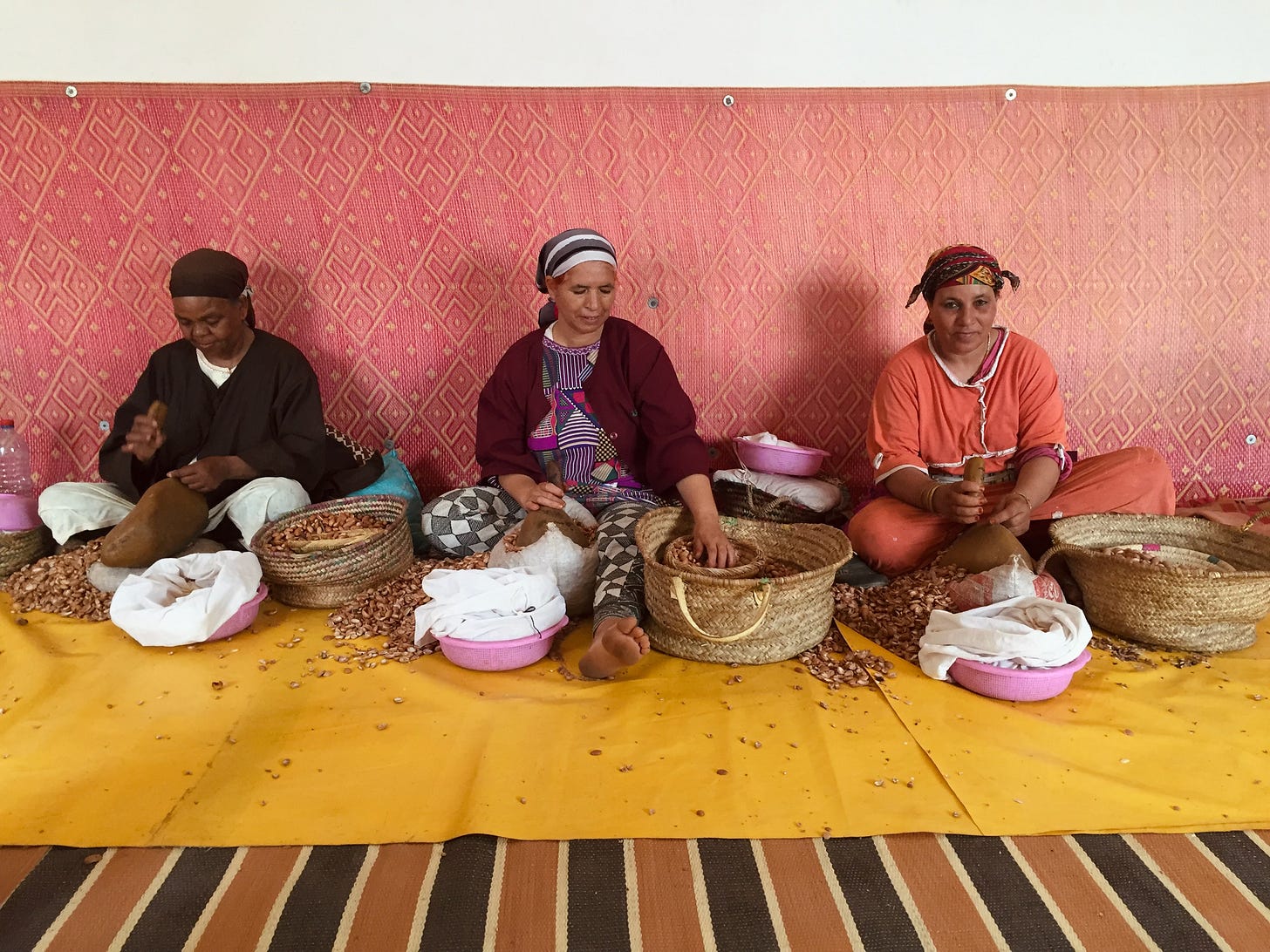
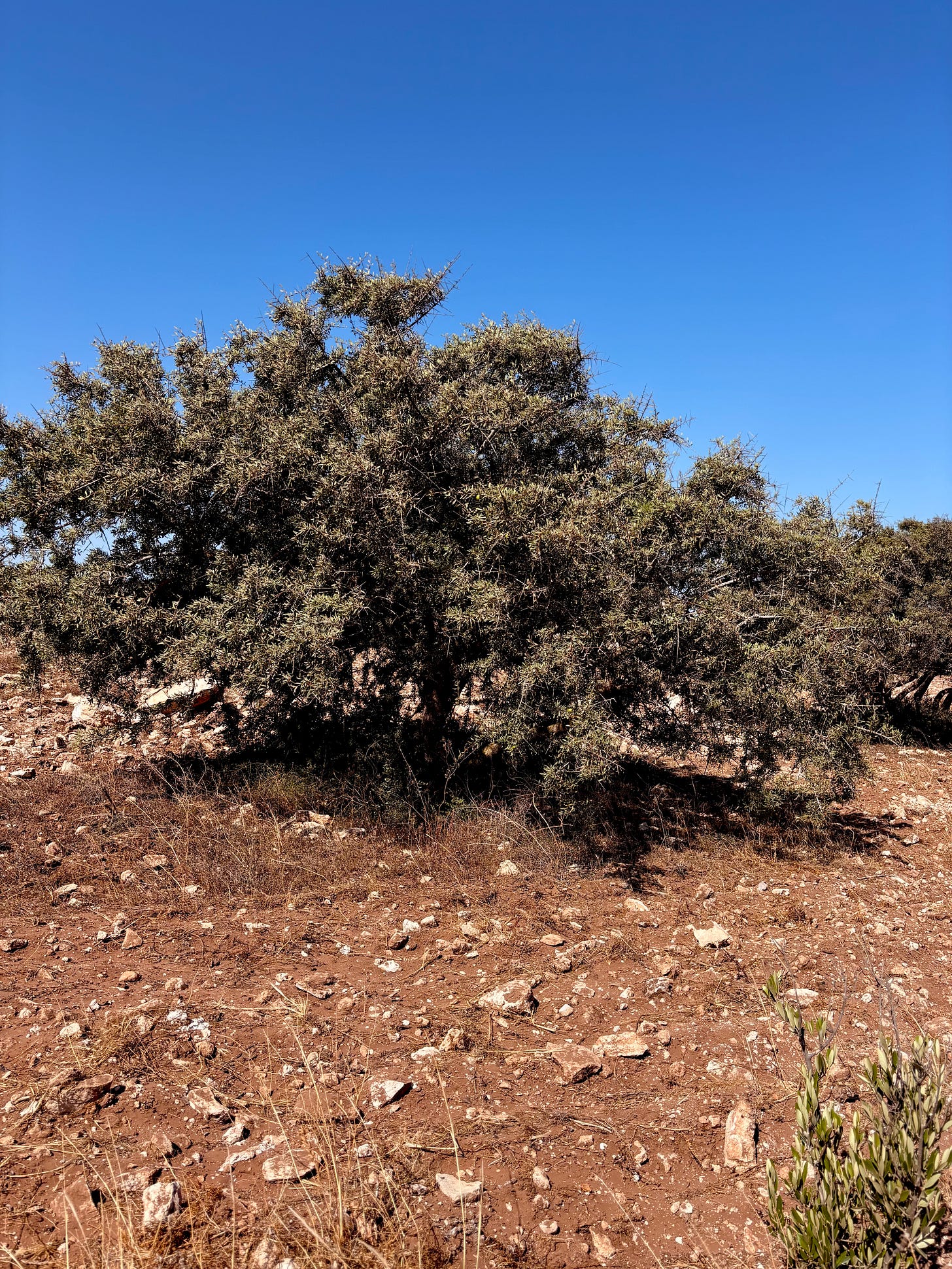
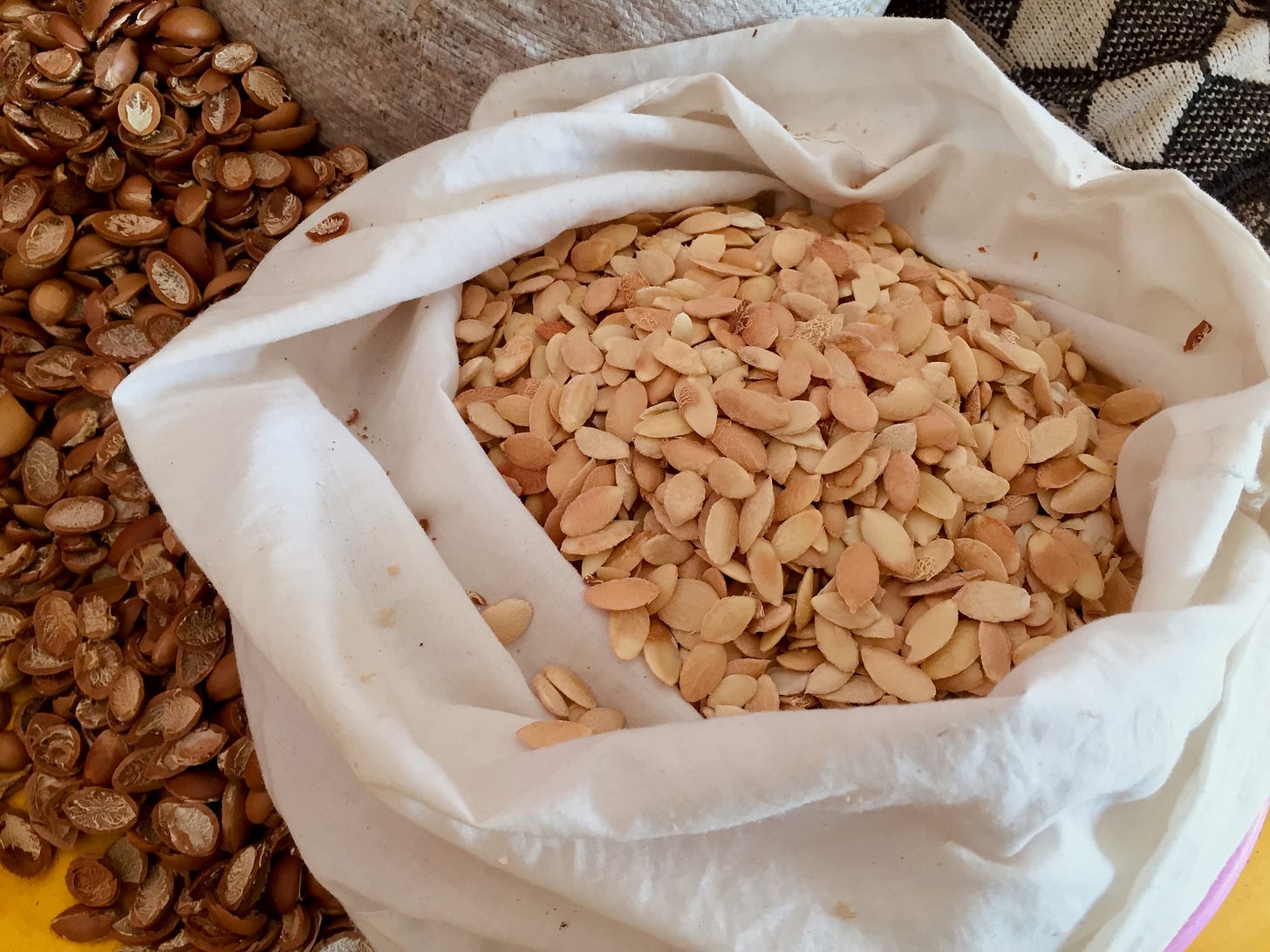
Thank you for shining a light on this, Sanaa. I felt so sad when I read of the trademarking of 'argane', as well the harsh conditions endured by women who aren't ultimately the owners of their own labour. Their courage and resilience deserves much more.
I, too, have wonderful memories of visiting an argan oil cooperative led by women some years back in Morocco. And of the distinctive taste of the oil on fresh Moroccan bread!
So horrible that the French have trademarked "argane" and have a stake in 70% of production. Colonialism in a different guise.
I visited one of the women's co-ops when I was in Morocco last year. The co-op prices reflect the painstaking job of producing the oil and the by-products.
I haven't tried using it as food. I'll buy some on my next visit.
Thanks for writing.